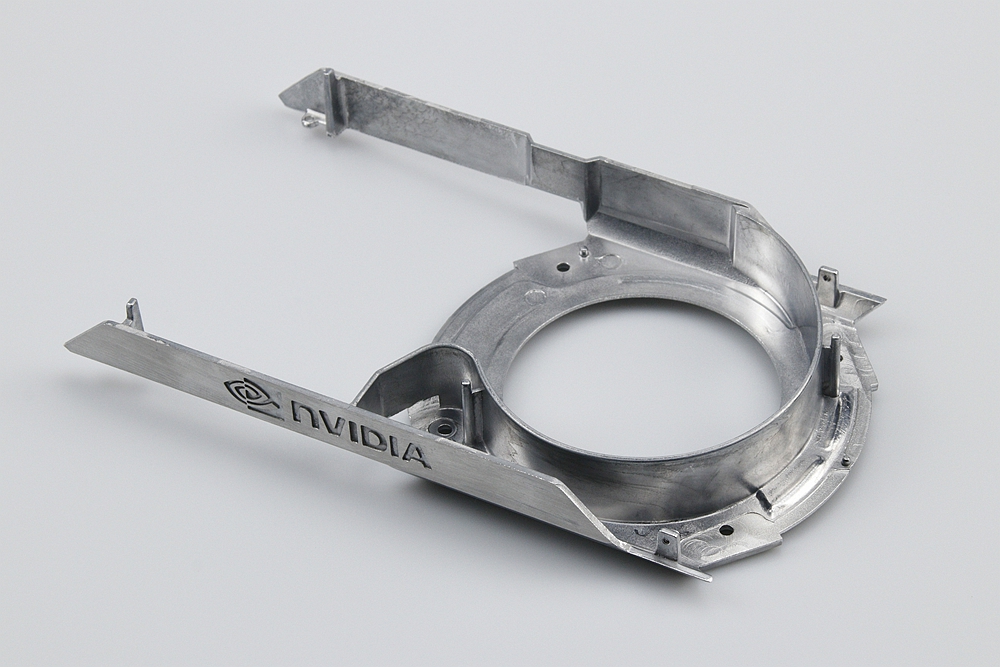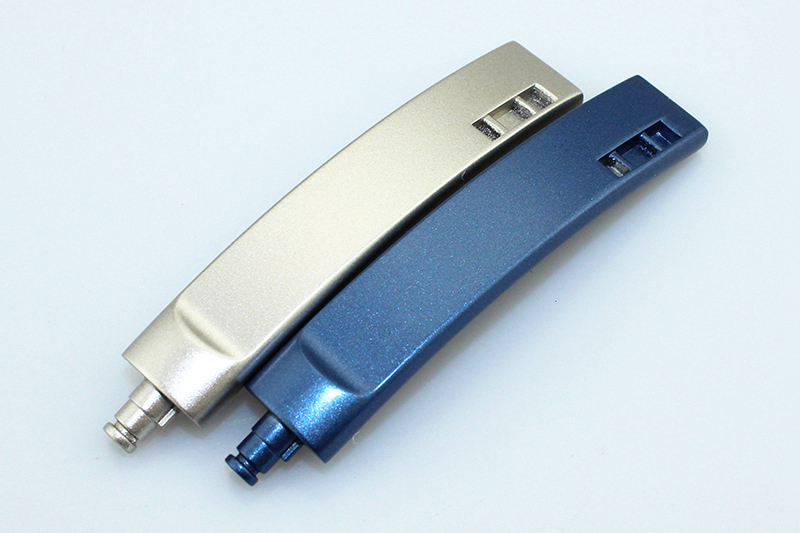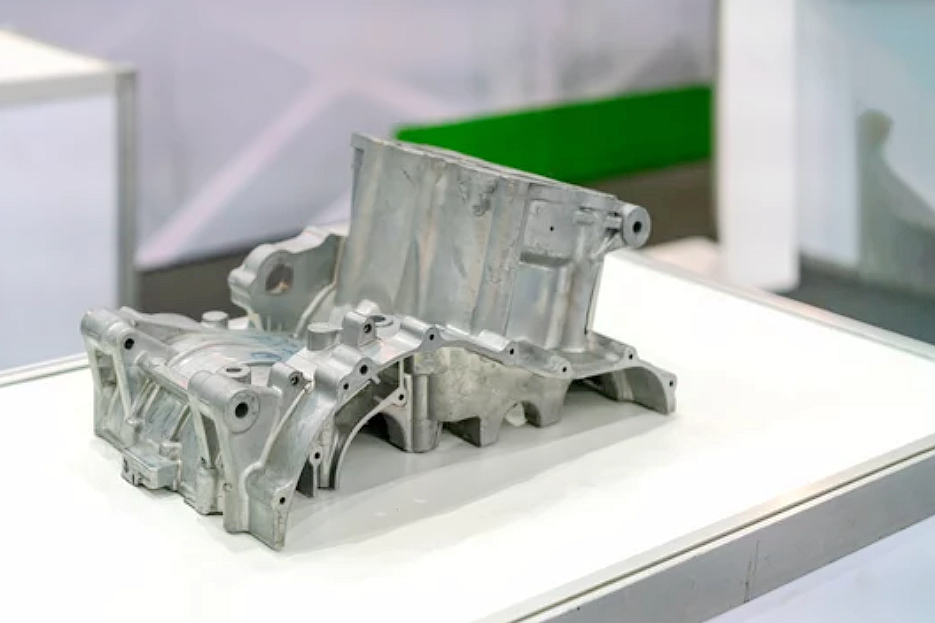8 typical surface treatments for aluminum die-cast parts you have to know
Aluminum die-cast parts are essential in various industries due to their strength, lightweight nature, and excellent thermal conductivity. However, surface treatments are often applied to enhance their performance and longevity. These treatments improve the aesthetic appeal of the parts and provide crucial properties such as corrosion resistance, increased hardness, and better wear resistance. In this blog, we will explore eight typical surface treatments for aluminum die-cast parts: Anodizing, Powder Coating, Electroplating, Painting, Passivation, Shot Blasting, Electrophoresis, and Physical Vapor Deposition (PVD). Understanding these treatments will help you select the proper method for your specific needs, ensuring optimal performance and durability of your die-cast components.
Aluminum Die Castings Anodizing
Process Overview:
Anodizing is an electrochemical process that converts the metal surface into a durable, corrosion-resistant, anodic oxide finish. This process involves submerging the aluminum part into an acid electrolyte bath and passing an electric current through the medium. As a result, oxygen ions from the electrolyte combine with the aluminum atoms on the surface, creating a thick, protective oxide layer.
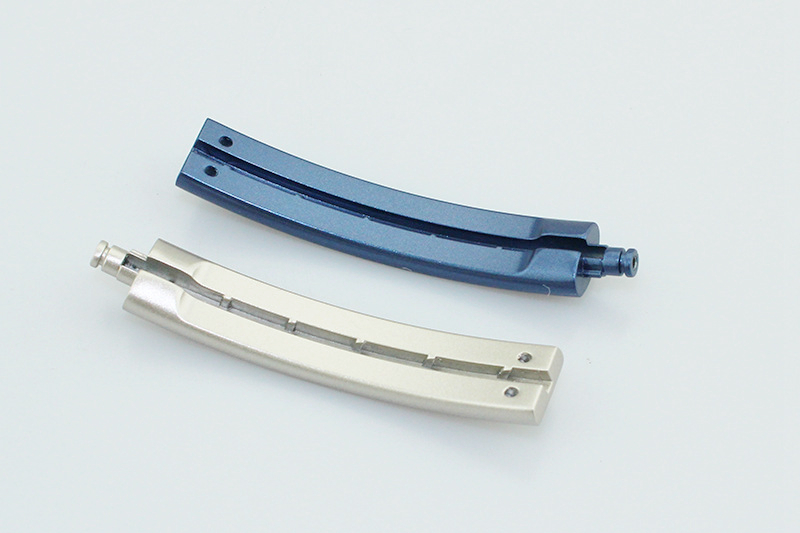
Benefits:
Corrosion Resistance: The anodized layer acts as a barrier to protect the aluminum from environmental factors that cause corrosion, significantly extending the part's lifespan.
Enhanced Appearance: Anodizing allows various color finishes, providing aesthetic flexibility and functional benefits. Colors are integrated into the oxide layer, ensuring they are long-lasting and do not peel or flake.
Increased Surface Hardness: The anodized layer increases the surface hardness of the aluminum, making it more resistant to scratches and wear. This property is crucial for parts subjected to frequent handling or abrasive conditions.
Typical Applications:
Aerospace: Components like structural parts and fittings benefit from the lightweight yet durable anodized surfaces, which are essential for high-performance aircraft.
Automotive: Anodized parts such as trims, handles, and rims are valued for their aesthetic appeal and resistance to weather conditions.
Consumer Electronics: Products like smartphones, laptops, and tablets utilize anodized aluminum for its sleek appearance and protective qualities.
Alu Die Castings Powder Coating
Process Overview:
Powder coating involves applying a dry, free-flowing powder to the surface of aluminum die-cast parts. The process begins with cleaning and pre-treating the parts to remove any contaminants. Then, the powder is electrostatically charged and sprayed onto the grounded aluminum parts. Once the powder is evenly applied, the parts are heated in a curing oven, causing the powder to melt and form a smooth, uniform, and durable coating.
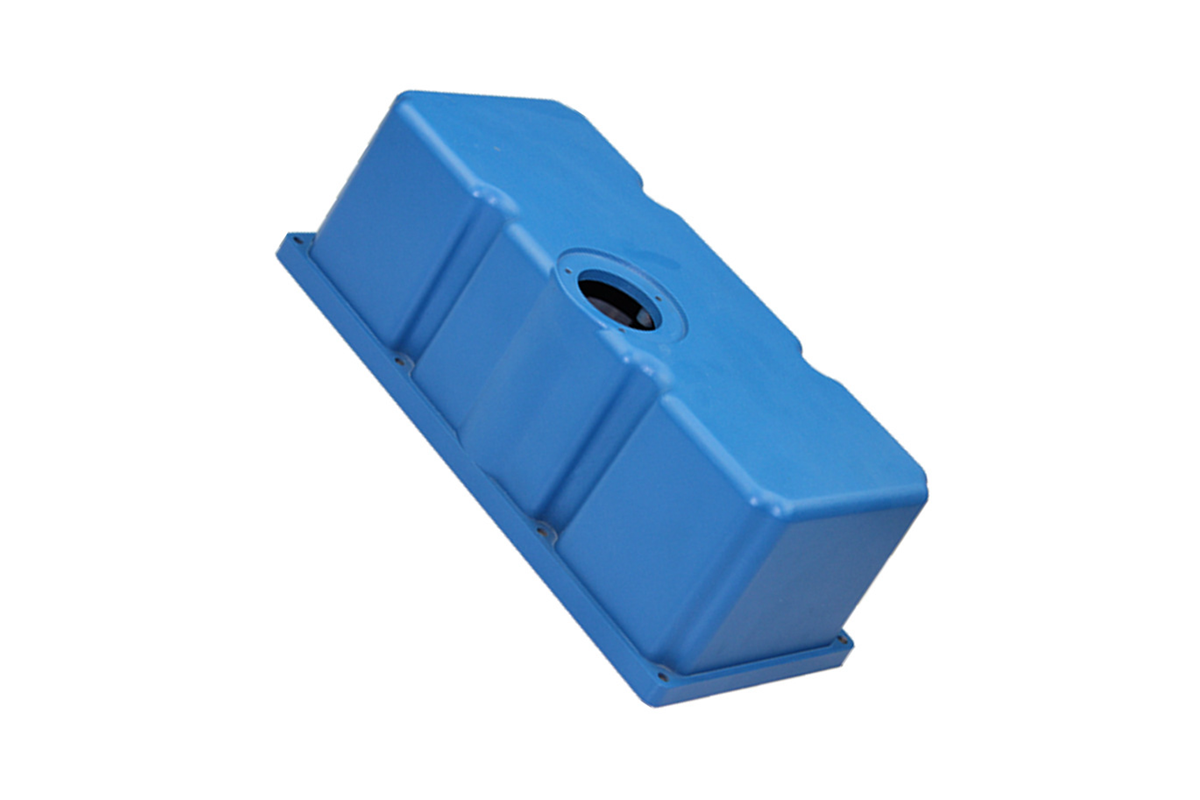
Benefits:
Durable and High-Quality Finish: Powder coating provides a thick, protective layer that is highly resistant to chipping, scratching, and fading. This durability makes it ideal for parts that will face harsh conditions.
Wide Range of Colors and Textures: The process allows for various colors, finishes, and textures, offering flexibility in design. The vast options are matte and glossy to metallic and textured finishes.
Environmentally Friendly: Unlike traditional liquid paint, powder coating contains no solvents and releases minimal volatile organic compounds (VOCs) into the atmosphere. It makes it a more eco-friendly option for surface finishing.
Typical Applications:
Outdoor Furniture: The durability and weather resistance of powder-coated surfaces make them ideal for patio furniture, which needs to withstand various environmental elements.
Automotive Parts: Components such as wheels, frames, and other exterior parts benefit from powder coating due to their resilience against road debris, UV light, and weather conditions.
Household Appliances: Items like refrigerators, washing machines, and microwaves use powder-coated surfaces to enhance appearance and protect against daily wear and tear.
Powder coating is a versatile and robust surface treatment for aluminum die-cast parts, offering superior protection and aesthetic appeal. Its durability and environmental benefits make it a popular choice across various industries.
Diecast Aluminum Parts Electroplating
Process Overview:
Electroplating is a process that uses an electric current to deposit a thin layer of metal onto the surface of aluminum die-cast parts. The parts are first cleaned and prepared to ensure proper adhesion. They are then submerged in an electrolyte solution containing metal ions. By passing an electric current through the solution, the metal ions are reduced and form a coherent metal coating on the surface of the aluminum parts.
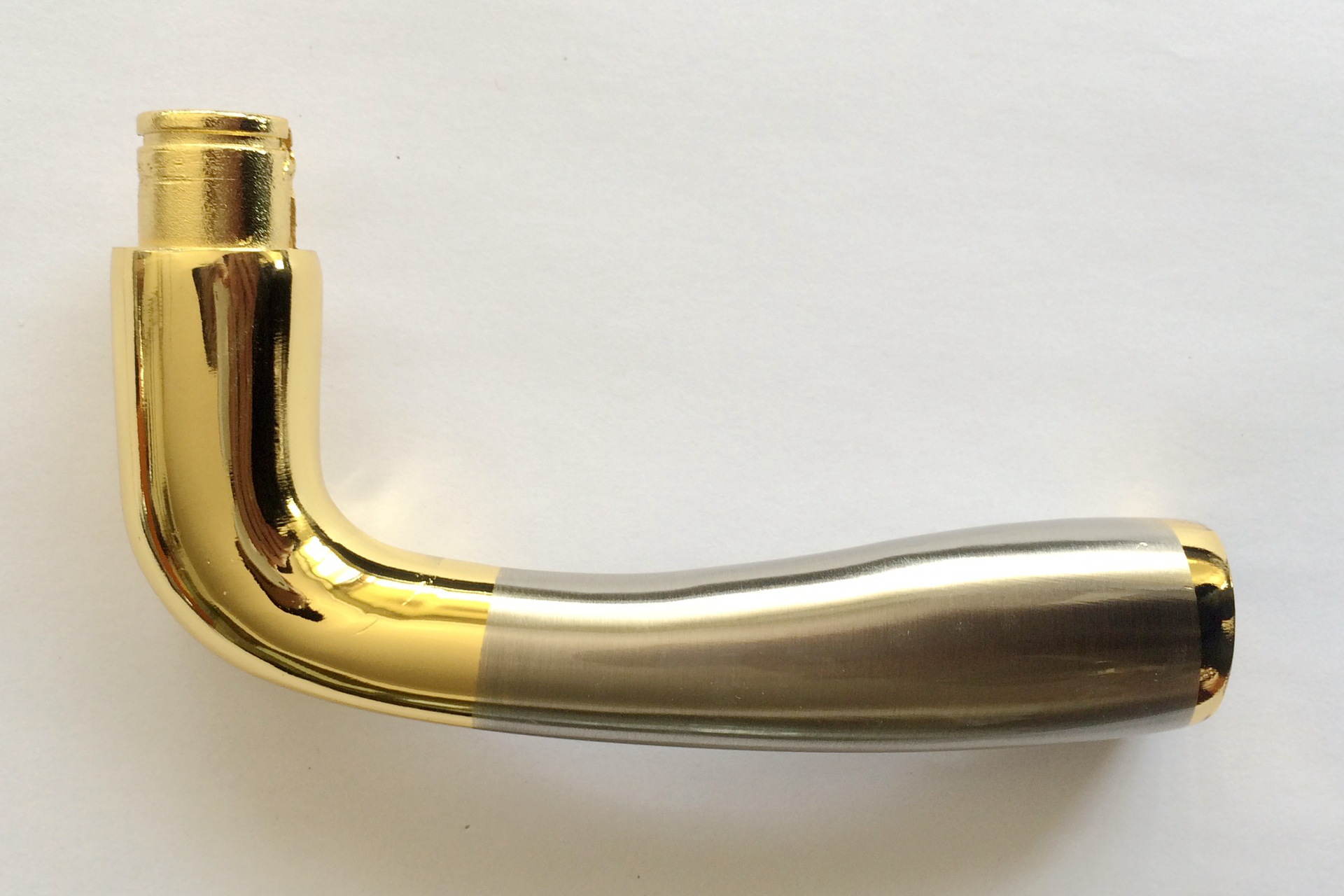
Benefits:
Enhanced Electrical Conductivity: Electroplating can significantly improve the electrical conductivity of aluminum parts, making it ideal for electronic components that require efficient electrical transmission.
Improved Wear Resistance: The deposited metal layer can provide enhanced wear resistance, reducing the risk of surface damage due to friction and mechanical contact.
Aesthetic Appeal: Electroplating offers a wide range of metal finishes, including gold, silver, nickel, and chrome. These finishes enhance the visual appeal of the parts and provide additional protection against corrosion and tarnish.
Typical Applications:
Electrical Components: Electroplated aluminum parts are commonly used in connectors, switches, and circuit boards, where enhanced conductivity and durability are essential.
Decorative Items like jewelry, watch components, and decorative hardware benefit from electroplated finishes' aesthetic qualities and protective properties.
Automotive Parts: Electroplated finishes are used in various automotive components, including trims, emblems, and hardware, to provide a combination of visual appeal and resistance to environmental factors.
Aluminium Diecastings Painting
Process Overview:
Painting aluminum die-cast parts involves applying liquid paint to the surface, which is dried and cured to form a protective and decorative coating. The process begins with cleaning and preparing the parts to ensure proper paint adhesion. Primer may be applied to improve the bond between the paint and the metal surface. The paint is then sprayed, brushed, or dipped onto the parts, followed by a curing process that solidifies the paint layer.
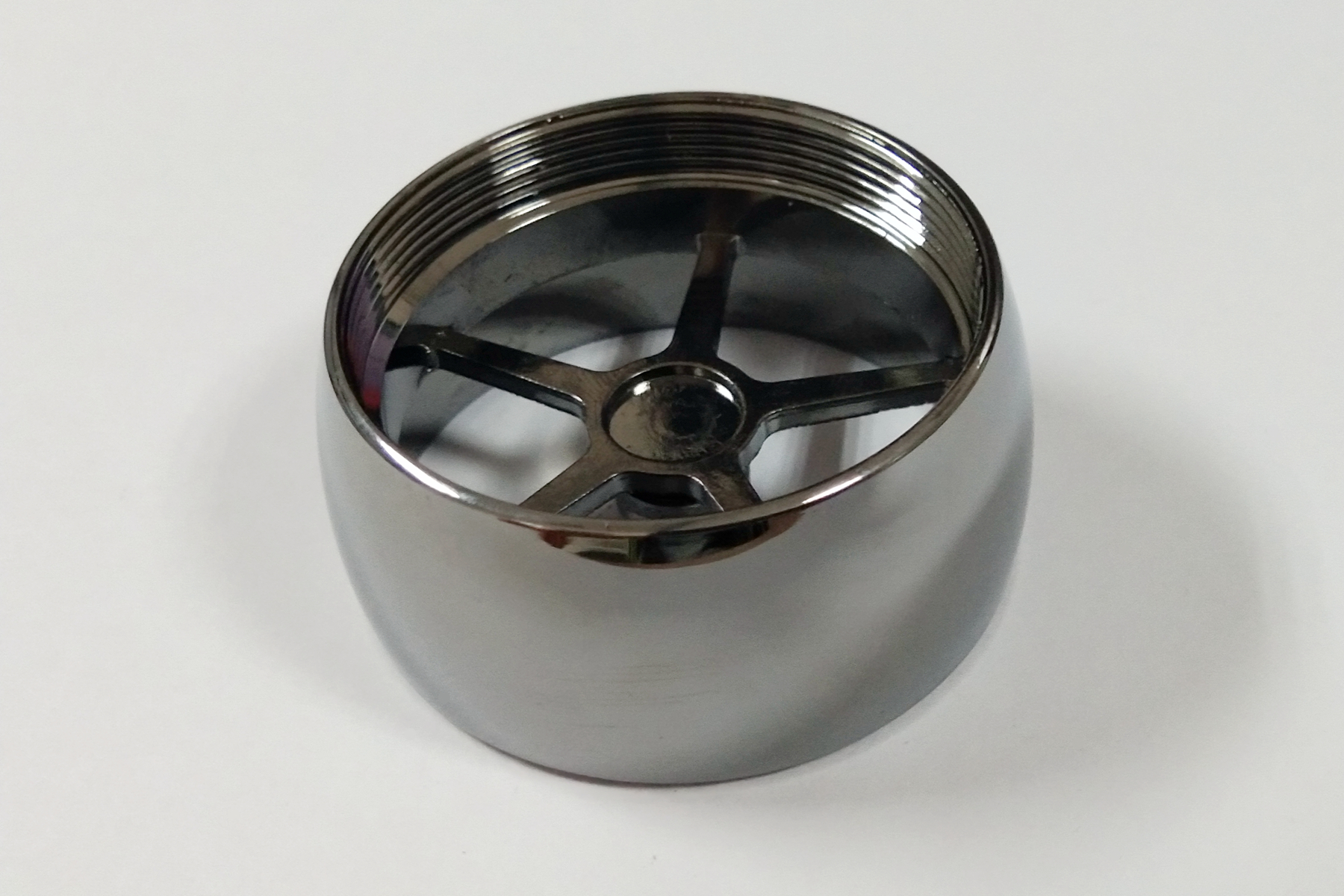
Benefits:
Cost-Effective: Painting is generally less expensive than other coating methods, making it an economical choice for large-scale production and for parts not requiring extreme durability.
Variety of Colors and Finishes: Painting offers an extensive palette of colors and finishes, including gloss, matte, metallic, and pearlescent options. This variety allows for significant customization to meet design requirements.
Easy Application and Touch-Up: Painting is straightforward and can be easily reapplied or touched if the surface gets damaged. It makes maintenance more convenient compared to other surface treatments.
Typical Applications:
Automotive: Painted aluminum parts such as body panels, wheels, and trims benefit from enhanced aesthetic appeal and protection against environmental factors like UV rays and moisture.
Machinery: Industrial machinery parts use paint to protect against rust and corrosion while allowing for color coding and identification.
Consumer Products: Household items, including appliances and furniture, often use painted aluminum parts to achieve desired looks and protect surfaces from daily wear and tear.
Aluminum Passivation
Process Overview:
Passivation is a chemical treatment process that enhances the corrosion resistance of aluminum die-cast parts. The process involves immersing the parts in a solution, typically containing nitric or citric acid, which removes surface contaminants and forms a protective oxide layer. This oxide layer is a barrier against corrosion without significantly altering the part's appearance or dimensions.
Benefits:
Enhanced Corrosion Resistance: The protective oxide layer formed during passivation significantly improves the part's resistance to corrosion, particularly in harsh environments.
Improved Surface Cleanliness: Passivation removes contaminants such as free iron, which can cause rust and corrosion, resulting in a cleaner and more stable surface.
Increased Lifespan: By protecting the aluminum surface from corrosive elements, passivation extends the lifespan of the parts, reducing the need for frequent replacements and maintenance.
Typical Applications:
Medical Devices: Passivated aluminum parts are used in medical devices and equipment where corrosion resistance and cleanliness are critical to ensure safety and functionality.
Food Processing Equipment: In the food industry, passivated aluminum parts are preferred for their enhanced cleanliness and resistance to corrosion, ensuring food safety and hygiene.
Marine Components: Parts exposed to marine environments benefit from passivation due to their ability to protect against saltwater corrosion and harsh weather conditions.
Shot Blasting
Process Overview:
Shot blasting is a mechanical process used to clean and prepare the surface of aluminum die-cast parts. During this process, small abrasive particles (shots) are propelled at high velocity against the surface of the parts. This action removes surface contaminants like rust, scale, and old coatings. It roughens the surface to improve adhesion for subsequent coatings or treatments.
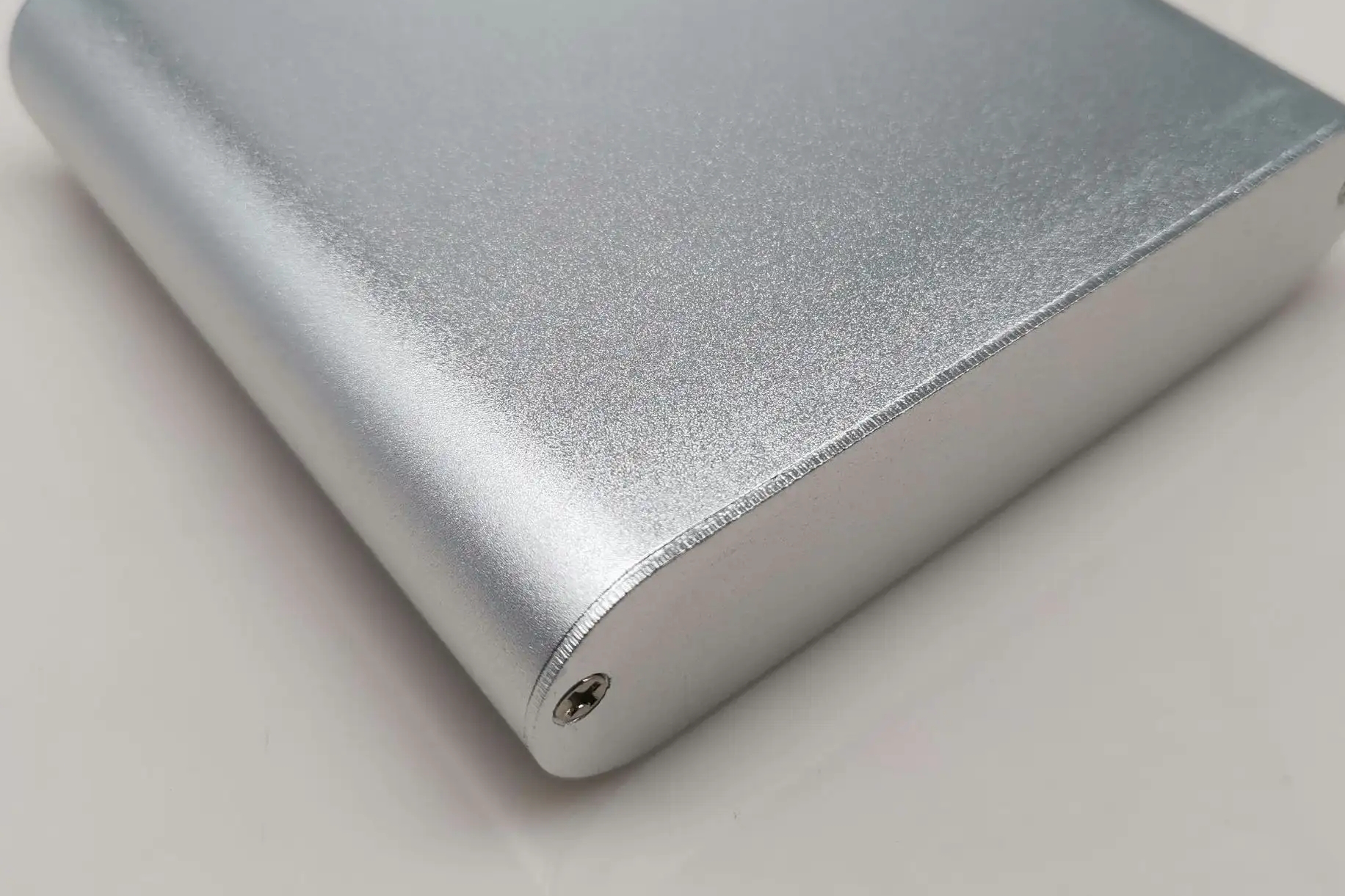
Benefits:
Improved Surface Adhesion: By creating a rough and textured surface, shot blasting enhances the adhesion of coatings, paints, and other surface treatments applied afterward.
Removal of Surface Contaminants: The process effectively removes rust, scale, and other contaminants, resulting in a clean and uniform surface.
Uniform Surface Texture: Shot blasting provides a consistent surface texture, essential for achieving the finished parts' uniform appearance and performance.
Typical Applications:
Pre-Treatment for Coating: Shot blasting is commonly used as a pre-treatment step before painting, powder coating, or anodizing, ensuring better adhesion and durability of the coatings.
Automotive Parts: Components such as engine blocks, cylinder heads, and suspension parts benefit from shot blasting to remove casting residues and prepare the surface for further processing.
Construction Parts: Structural aluminum parts used in construction are shot blasted to remove contaminants and prepare them for protective coatings, enhancing their durability and lifespan.
Aluminum Electrophoresis
Process Overview:
Electrophoresis, or e-coating or electrocoating, is when electrically charged particles are deposited onto a conductive surface using an electric field. In this process, aluminum die-cast parts are immersed in a bath containing a water-based paint or coating solution. An electric current is then applied, causing the paint particles to migrate and adhere uniformly to the surface of the parts. After the coating is applied, the parts are rinsed and baked to cure the coating, ensuring a durable and even finish.
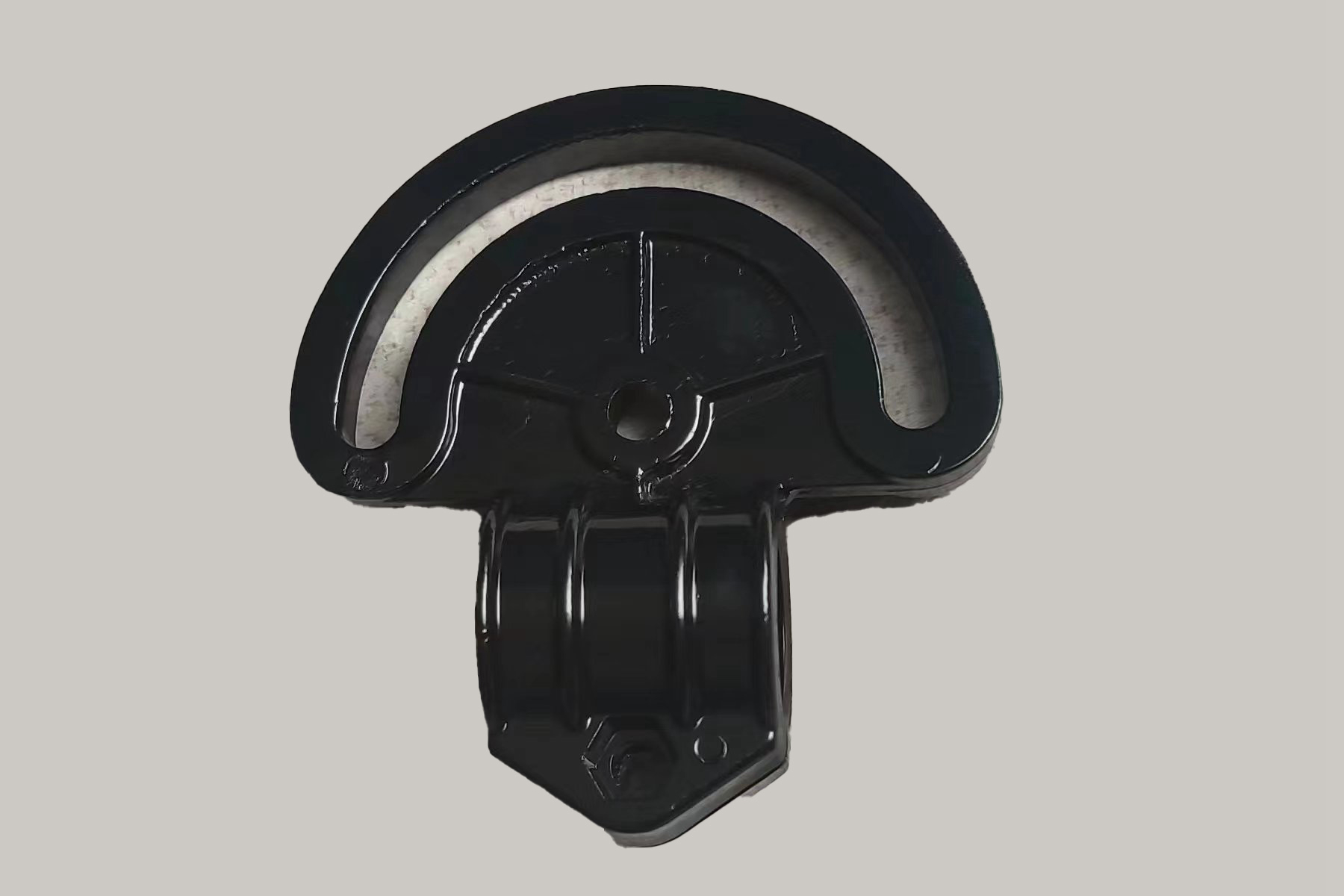
Benefits:
Uniform and Thin Coating: Electrophoresis provides a uniform and consistent coating, even on complex shapes and hard-to-reach areas. The thin, even layer ensures complete coverage without excessive buildup.
High Corrosion Resistance: The e-coating process creates a robust protective layer that significantly enhances the corrosion resistance of the parts, extending their service life.
Efficient and Eco-Friendly Process: Electrophoresis is an efficient process that minimizes waste, as the water-based coating solution can be reused. It also produces fewer emissions than solvent-based coating methods, making it an environmentally friendly option.
Typical Applications:
Automotive Parts: E-coated aluminum parts such as frames, suspension components, and brackets benefit from enhanced corrosion resistance and a uniform finish, ensuring long-term performance and reliability.
Electronics: Small electronic components, connectors, and casings utilize electrophoresis for precise and even coatings that protect against corrosion and wear.
Household Appliances: Appliances such as washing machines, refrigerators, and air conditioners use e-coated aluminum parts to ensure durability and a clean, consistent appearance.
Aluminum Die Castings Physical Vapor Deposition (PVD)
Process Overview:
Physical Vapor Deposition (PVD) is a vacuum deposition method that produces thin films and coatings on aluminum die-cast parts. The process involves evading a solid material (typically a metal) in a high-vacuum environment. The evaporated material then condenses on the surface of the aluminum parts, forming a thin, durable coating. This technique allows precise control over the coating's thickness and composition, resulting in high-performance surface finishes.
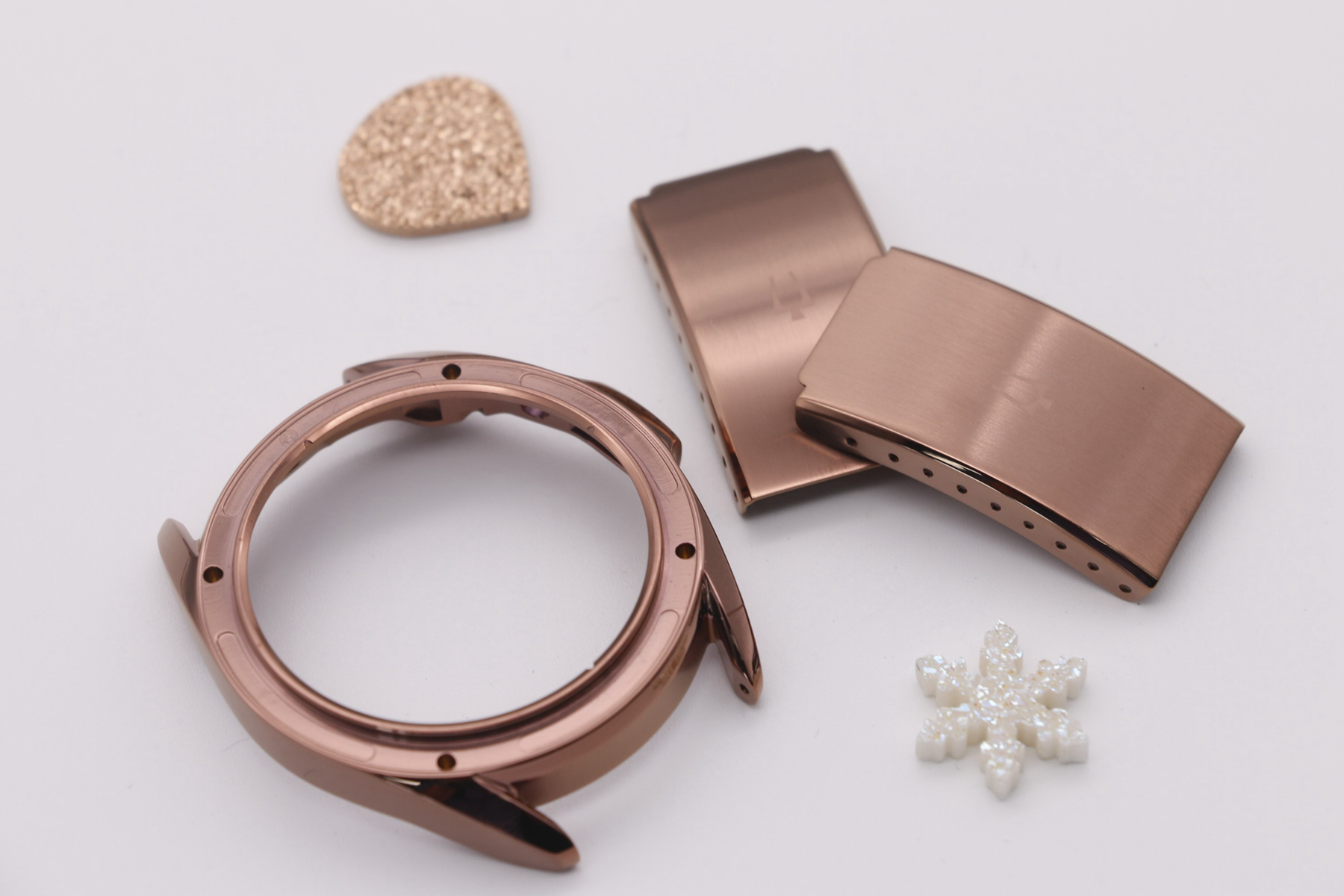
Benefits:
Extremely Hard and Wear-Resistant Surface: PVD coatings have exceptional hardness and wear resistance, making them ideal for parts subjected to abrasive conditions and mechanical stress.
Decorative Finishes with Various Colors: PVD can produce a range of attractive finishes, including metallic colors like gold, silver, and titanium. These finishes are not only decorative but also provide additional protection.
Environmentally Friendly: PVD is a clean and environmentally friendly process that does not produce hazardous byproducts or emissions, making it a sustainable choice for surface treatment.
Typical Applications:
Cutting Tools: PVD coatings are widely used on cutting tools, such as drills, end mills, and saw blades, to enhance their hardness and extend their operational life.
Decorative Items: Jewelry, watches, and other decorative products benefit from the aesthetic appeal and durability of PVD coatings, providing a high-quality, long-lasting finish.
Electronic Components: PVD coatings are applied to electronic devices and components to improve their wear resistance and visual appearance.
Physical Vapor Deposition (PVD) offers a superior surface treatment for aluminum die-cast parts, combining outstanding durability with decorative versatility. Its ability to produce complex, wear-resistant coatings in various colors makes it suitable for functional and aesthetic applications across numerous industries. By opting for PVD, manufacturers can ensure their parts achieve high performance and an attractive finish while adhering to environmentally friendly practices.
How to Select the Right Surface Treatment
Factors to Consider:
End-Use Environment:
Corrosive Environments: If the parts are exposed to corrosive elements such as saltwater or chemicals, treatments like anodizing, electrophoresis, and passivation are ideal due to their superior corrosion resistance.
High-Wear Conditions: PVD and electroplating provide excellent wear resistance and durability for parts subject to friction and mechanical wear.
Aesthetic Requirements: When appearance is crucial, painting, powder coating, and anodizing offer a wide range of colors and finishes to enhance the visual appeal of the parts.
Performance Requirements:
Durability: Anodizing, PVD, and powder coating enhance surface hardness and longevity.
Electrical Conductivity: Electroplating is preferred for parts that need improved electrical conductivity, such as electronic components.
Cleanliness and Hygiene: Passivation and electrophoresis ensure a clean, contaminant-free surface for medical or food industry applications.
Cost and Efficiency:
Budget: Painting and powder coating are generally more cost-effective, making them suitable for large-scale production where cost is a significant factor.
Production Speed: Electrophoresis and powder coating offer efficient processing times and are suitable for high-volume production.
Scalability: Consider the scalability of the treatment process to ensure it can meet production demands without compromising quality.
Decision-Making Tips:
Assess Specific Needs: Evaluate the specific requirements of your application, considering factors such as the operating environment, mechanical stresses, and aesthetic preferences.
Compare Benefits and Limitations: Weigh the advantages and disadvantages of each surface treatment. For instance, while anodizing provides excellent corrosion resistance, it might not offer the same level of wear resistance as PVD.
Consult with Specialists: Seek advice from surface treatment experts who can provide insights and recommendations based on your requirements and industry standards.
Selecting the proper surface treatment for aluminum die-cast parts ensures optimal performance, durability, and appearance. By considering the end-use environment, performance requirements, and cost factors, you can make an informed decision that meets your needs. Consulting with specialists can further refine your choice, ensuring that the selected treatment provides the best possible results for your application.
